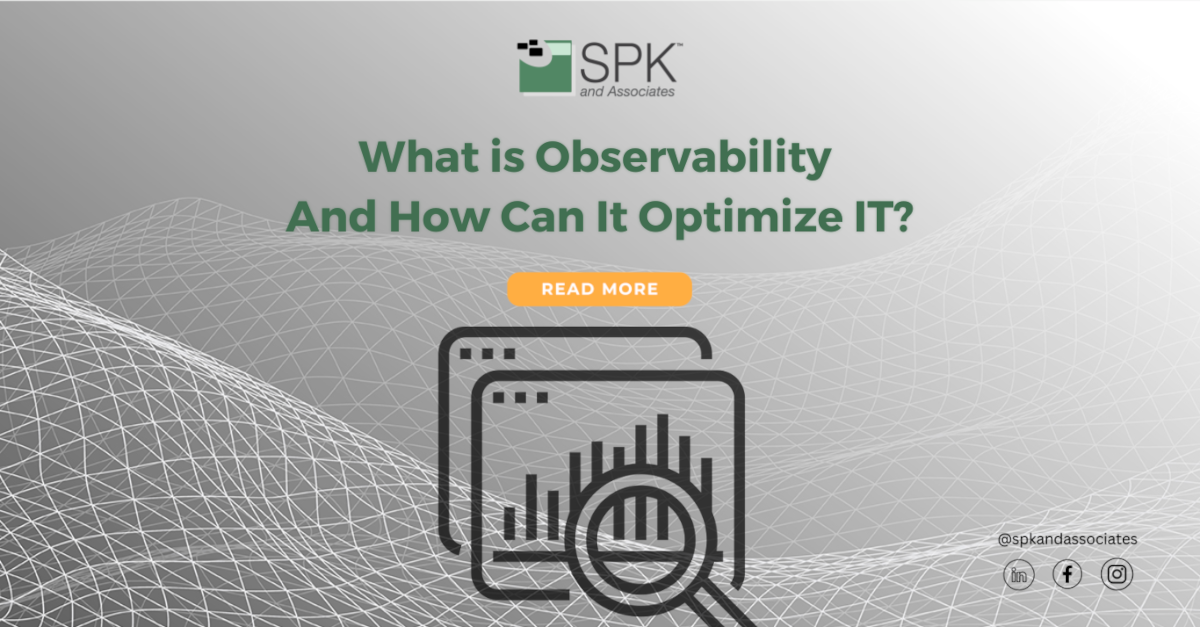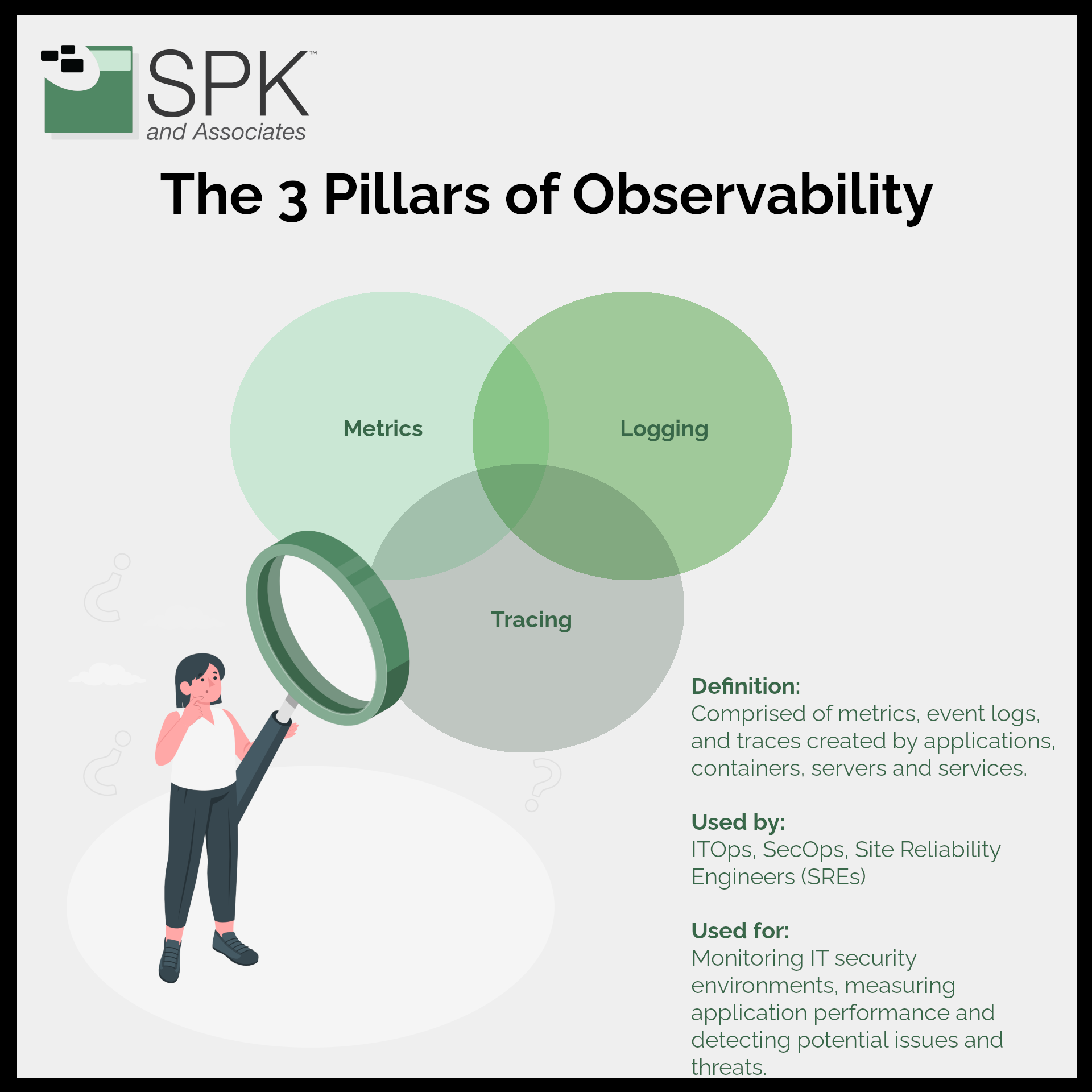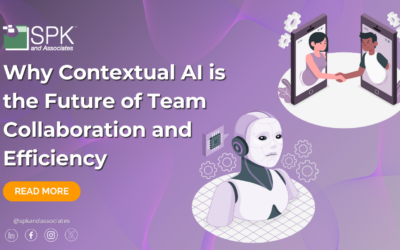Your IT architecture is anything but simple. In fact, it’s more like the complex, yet silent spinal cord of your business functions. But what can you do when something goes wrong? Monitoring tools give you a partial view into business performance (or issues), delivering necessary metrics. Yet, what about the hidden pain points lurking in the dark? That’s where observability steps in. Observability goes beyond the visible metrics to provide deeper insights. So, how can it help you optimize IT in your business?
Types of IT Monitoring: One Size Doesn’t Fit All
From infrastructure and application to log and security, monitoring types are aplenty. Infrastructure focuses on your servers and storage, while application monitoring looks into performance metrics like response times and error rates. Additionally, log monitoring dives into user activity data, and security monitoring acts like your virtual sentry. Lastly, cost monitoring in the cloud helps in identifying unused resources, thereby saving money.
Observability vs. Monitoring: What’s The Difference?
Consider monitoring as taking a painkiller for your five-year long back ache. Your brain is subconsciously monitoring your body and knows something is wrong. So, you treat the symptom. But it doesn’t tell you what the underlying issue is. Observability, on the other hand, is like a full MRI scan. It gives you the visuals you need, under the skin, to directly pinpoint the root cause of the pain and other potential pain paints that could be triggered. While monitoring is perfect for identifying and solving known issues, observability lets you discover new problems. Using both can be a powerful strategy to optimize IT performance.

Used in tandem, both tools fortify security by identifying vulnerabilities and ensuring regulatory compliance. These guide smarter decisions and streamline operations. At SPK, we recommend introducing observability as one of the top 6 ways to improve DevOps in your business.
How To Optimize IT: Observability in Action
Let’s say your application is underperforming and you want to optimize IT operations. With observability, you dive deep to find if the problem is:
- In your code
- Lying with third-party services.
- An elusive server-related issue.
It’s highly recommended you partner with a trusted Managed Services Provider to complete observability. Because, businesses are swimming in data, but what good is a library if the books aren’t organized? Old-school monitoring tools can’t keep up with today’s complex needs. Partnering with a Managed Service Provider like SPK can offer you the organizing principle your data library so desperately needs. At SPK, we provide a Single Pane of Glass (SPOG) to help our clients. It simplifies the vast amounts of data so you can make informed decisions.
Once your MSP has diagnosed the issue, they will provide actionable solutions and, if possible, identify areas for cost reductions. Ultimately, observability improves reliability and visibility.
Observability: The Three Pillars To Optimize IT
At the heart of observability are three main components: logs, metrics, and traces. Each has its value, but they can also present challenges, especially as the data amount grows exponentially. So, to overcome these issues, MSPs utilize AIOps.
AIOps not only aggregates this data but also makes sense of it, generating actionable insights. Moreover, predictive analytics tools allow MSPs like SPK to spot anomalies and potential risks proactively.
Completing these tasks in-house requires technical expertise. Not to mention the resource to actually complete the work and make sense of it. The lack of the two aforementioned points, typically means businesses either:
- De-prioritize observability and continue to treat symptoms only.
- Miss out on data driven intelligence that could actually grow their business and reduce investment.
Additionally, when you understand common themes in monitoring and observability pain points, you can also set KPIs to continually optimize IT performance.
Best Practices For IT Monitoring And Observability
Best Practices for Monitoring
- Set Clear Objectives: Know what you want to achieve with monitoring, such as reduced downtime or improved performance.
- Automate Alerts: Integrate real-time alerts for metrics that exceed defined thresholds.
- Multi-Layer Monitoring: Track infrastructure, applications, and user activity for a complete picture.
- Regular Audits: Consistently evaluate and update your monitoring strategies to ensure they align with evolving business goals.
- Data Retention: Store historic data for trend analysis and long-term planning.
Best Practices for Observability
- High-Cardinality Indexing: Allow indexing by any attribute for deeper insights.
- Dynamic Instrumentation: Adapt your data gathering techniques as system requirements change.
- Correlation Analysis: Link metrics, logs, and traces for a unified view of system health.
- Anomaly Detection: Use machine learning or statistical methods to identify atypical behavior.
- User-Centric: Always relate observability data back to the end-user experience for more actionable insights.
Both observability and monitoring serve essential, complementary roles to optimize IT in your business. Mastering the best practices of each will grant you not just a well-tuned system but a competitive edge. Partnering with an experienced MSP can help you to relieve the resource and technical expertise burden.
Partner With An MSP For Observability and Monitoring
Navigating the observability doesn’t have to be complex. That’s where a trusted and specialized MSP like SPK comes in. We offer tailored guidance for implementing both monitoring and observability. As a global managed service provider specializing in observability, we focus on more than just system maintenance. We aim for relentless improvement. Through observability, we provide specific recommendations that not only boost system performance but also yield considerable cost savings.
If you’re ready to get under the skin of your business operations, contact our observability team here.







